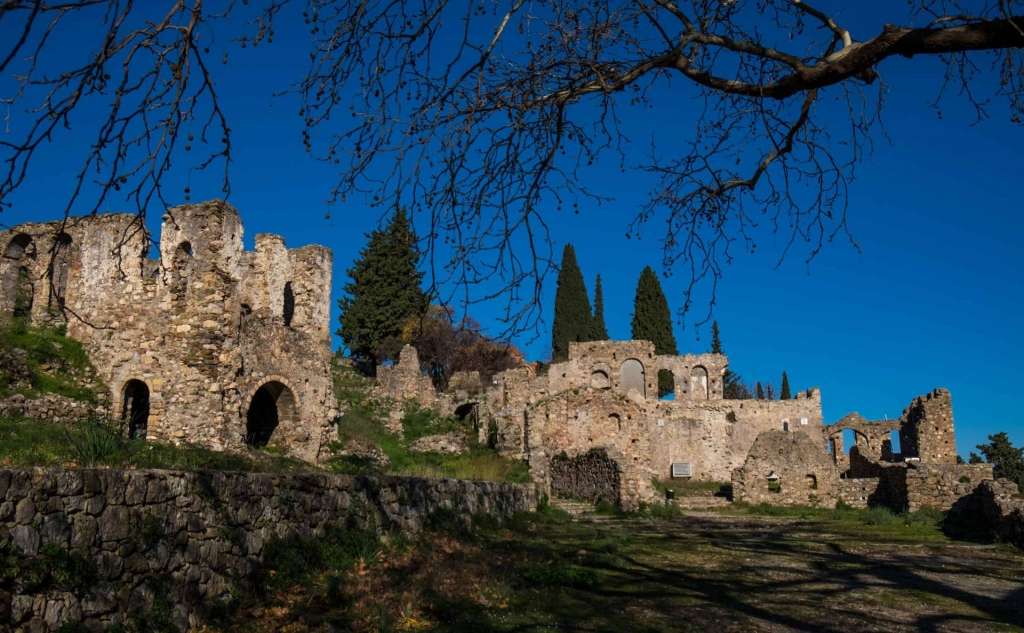Koumoustas Settlement

West of Xirokabi, at Anakolos gorge, the Medieval settlement of Koumousta with the 16th-18th century whole traditional, stone-built buildings, the marble fountains and the five Byzantine churches (Agios Konstantinos, Profios Aligon, Panate Dimitrios) stands out.
The settlement is built at an altitude of 750 metres and covers an area of 95 acres in total. It experienced great prosperity during the Byzantine years. At some point, in fact, it had 2000 inhabitants. It began to be abandoned after the fall of Mystras and finally was deserted entirely shortly before the end of the Civil War. The school, built with contributions from residents and the support of the Monastery of Gola during the late Ottoman period, last operated in 1958-1959.
Residential traces of the first habitation of Koumousta are the small Byzantine church of Panagia (dedicated to the Presentation of the Virgin Mary), with frescoes of the late 13th and early 14th centuries. Today, the settlement has only two inhabitants, Mr and Mrs Karapapas.
During the 15th century, Koumousta was a settlement with three surrounding small forts, one at the gorge's entrance from the plain (at Xirokabi), one at the river - bed and one in the settlement. The settlement (by this name) was mentioned during the First Venetian-Turkish War in 1463-1479.
Most of the settlement buildings follow the Peloponnesian 'peculiarity' of the Byzantine - Balkan two-storey buildings. The floors were divided into two rooms, the "hall room" and the "winter room" with a partition of wooden planks, while the ground floor was, as a rule, a single, big room. Also, in the yard, there are stone, vaulted ovens. The old cemetery was located at Rouga, near Agios Konstantinos, while the new one is located at Profitis Ilias.
By the end of the 17th century, Koumousta had developed into a large residential centre with 150 houses and more than 600 inhabitants. During 1715-1821, during the Second Turkish Occupation, Koumousta belonged to the Kazas of Mystras. In 1719, a plague epidemic decimated the population and in 1729, a major earthquake destroyed many buildings. This earthquake, in fact, caused the collapse of the church of Agios Konstantinos dome. During the Orlov Revolt period, at the end of the 18th century, Koumousta was set on fire in retaliation for the participation of the inhabitants in the uprising, while during the Greek Revolution, the Koumoustians participated in the battles of the Peloponnese.



